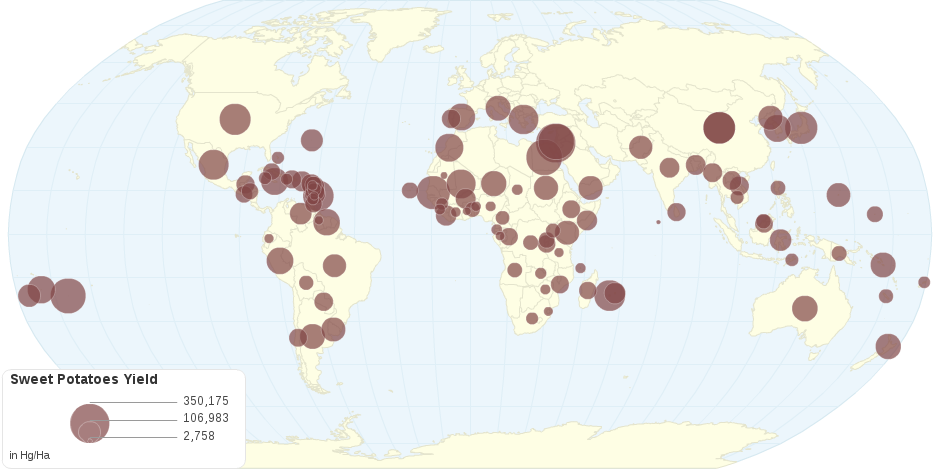This chart shows Sweet Potatoes Yield by Country.
The sweet potato is a dicotyledonous plant that belongs to the morning glory family Convolvulaceae. Its large, starchy, sweet-tasting, tuberous roots are a root vegetable.In some parts of the English-speaking world, sweet potatoes are locally known by other names, including "yam" and kumara. The young leaves and shoots are sometimes eaten as greens.
The sweet potato is only distantly related to the potato and does not belong to the nightshade family Solanaceae, but that family is part of the same taxonomic order as sweet potatoes, the Solanales.
The plant is a herbaceous perennial vine, bearing alternate heart-shaped or palmately lobed leaves and medium-sized sympetalous flowers. The edible tuberous root is long and tapered, with a smooth skin whose color ranges between yellow, orange, red, brown, purple, and beige. Its flesh ranges from beige through white, red, pink, violet, yellow, orange, and purple.
Sweet potato varieties with white or pale yellow flesh are less sweet and moist than those with red, pink or orange flesh. Besides simple starches, raw sweet potatoes are rich in complex carbohydrates, dietary fiber and beta-carotene , while having moderate contents of other micronutrients, including vitamin B5, vitamin B6 and manganese.When cooked by baking, small variable changes in micronutrient density occur to include a higher content of vitamin C at 24% of the Daily Value per 100 g serving.
Sweet potato varieties with dark orange flesh have more beta-carotene than those with light-colored flesh, and their increased cultivation is being encouraged in Africa where vitamin A deficiency is a serious health problem.
9 years ago

